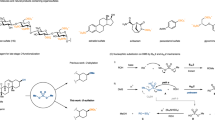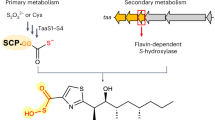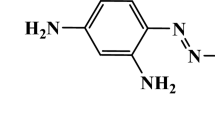Abstract
WE have confirmed and extended the observations of L. K. Wolff and H. W. Julius (1939) that sulphanilamide acts on bacteria only when they are multiplying, that is, in the logarithmic phase of their growth. Taking into consideration the physicochemical changes which are apparent in the environment of bacteria rapidly subdividing, more especially the rapid fall in potential which accompanies multiplication, we have looked for a reducing agent and have found that about the time when the sulphonamides begin to act in vitro a substance is produced which gives the o-dinitrobenzene test applied by Fearon and Kawerau (1943) to the recognition of dienol compounds. This substance is of the nature of, and may be identical with, reductone.
This is a preview of subscription content, access via your institution
Access options
Subscribe to this journal
Receive 51 print issues and online access
$199.00 per year
only $3.90 per issue
Buy this article
- Purchase on SpringerLink
- Instant access to full article PDF
Prices may be subject to local taxes which are calculated during checkout
Similar content being viewed by others
Author information
Authors and Affiliations
Rights and permissions
About this article
Cite this article
O'MEARA, R., MCNALLY, P. & NELSON, H. Bacteriostatic Action of Sulphonamide Derivatives. Nature 154, 796 (1944). https://doi.org/10.1038/154796a0
Issue date:
DOI: https://doi.org/10.1038/154796a0
This article is cited by
-
Reductone and the Synthesis of Pteridines
Nature (1948)



